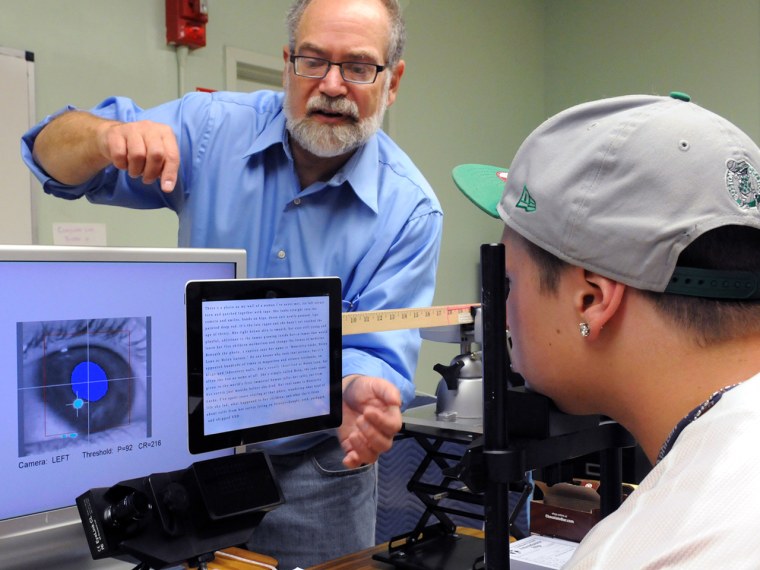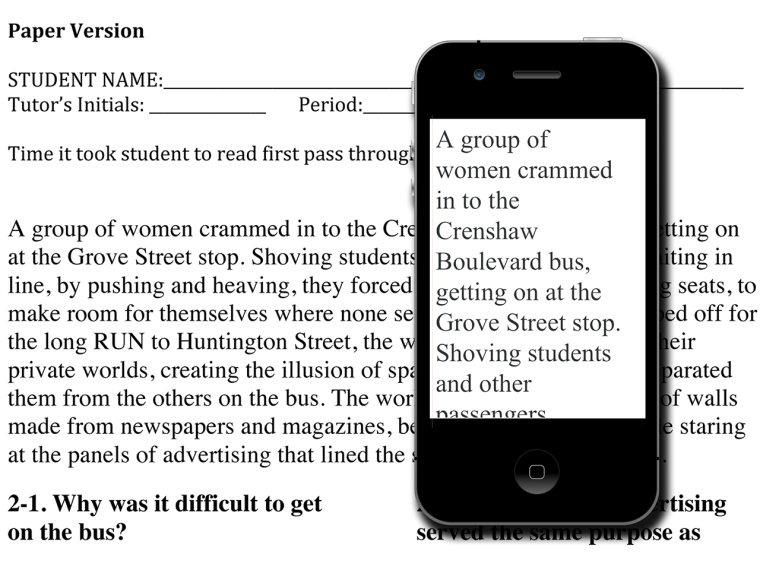An e-reader may make reading less of a struggle for some kids with dyslexia, a new study shows.
Researchers found that high-school students with dyslexia had an easier time reading sentences broken up into short segments — two to three words per line — displayed on an iPod than the same text printed in standard format on paper, according to the study published in PLOS ONE.
The researchers, from Harvard and the University of Massachusetts, suspect that in dyslexic people, the visual centers of the brain suffer from a kind of attention deficit disorder. When there are fewer words per line, the brain is less distracted and better able to focus.
“The brain should be paying attention to what the person is looking at straight ahead,” explains Matthew Schneps, the lead author of the new study and director of the laboratory for visual learning at the Harvard-Smithsonian Center for Astrophysics. But in kids with dyslexia, “the eyes are looking at the right part of the text, but the brain is distracted by the rest of the text.”
Schneps, who has dyslexia himself, fortuitously discovered the e-reader effect when he was forced to read texts a few words at a time on a smart phone.
That discovery completely changed the way he felt about reading.
“I had stopped reading for pleasure about 20 years ago,” he says. “I stopped reading novels. And when I discovered this technique – before we started the research – I realized I could read again. I could get through a novel in a couple of weeks, like most readers can.”
Schneps and his colleagues asked 103 high school student volunteers to read text both via iPod and on paper in standard format. All of the students had been diagnosed with dyslexia, but had normal vision and no histories of neurological disorders other than dyslexia.

The researchers found that there was a slight increase in the speed with which students read and also, for some students, an improvement in comprehension. More important, Schneps says, the students reported that they found reading easier on the iPod than on paper.
“I think it’s a nice study,” says Lorie Humphrey, an assistant professor of neuropsychology at the University of California, Los Angeles. “Clearly different groups benefited in different ways.”
What’s not clear is whether the new reading method is helping with the dyslexia or with ADD, which often co-exists with the learning disability.
There is a controversy over what role visual attention problems play in dyslexia, Humphrey says. Many experts say the real problem is a difficulty in linking individual and groups of letters with the sounds they correspond to. The e-reader method wouldn’t help much with that problem, Humphrey suspects.
